Complete guide to pineapple plant care
If you're looking to bring exotic vibes to your home, the pineapple plant is a great place to start.
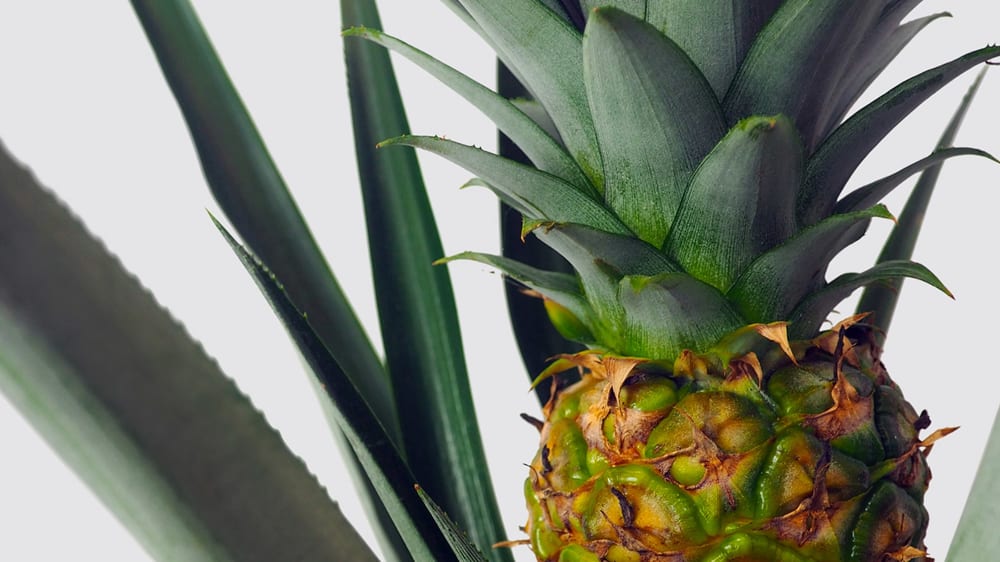
Pineapple plants are tropical, evergreen plants that are easy to care for and make a great addition to any home. The pineapple plant is popular for its ornamental appearance, with its large, glossy leaves and vibrant yellow flowers. Keep your pineapple plant happy by:
- Giving it lots of bright light - growing fruit takes lots of energy
- Watering regularly, but let the soil dry out in-between
- Feeding weekly in spring and summer
About pineapple plants
Originally grown in the southern states of America and South America, this plant has one very distinctive feature. You guessed it, a pineapple. This pineapple grows on top of the plant’s sword-like leaves, first appearing as tubular purple flowers in summer before turning into small fruits. We call our pineapple plant Piña, can you guess why?
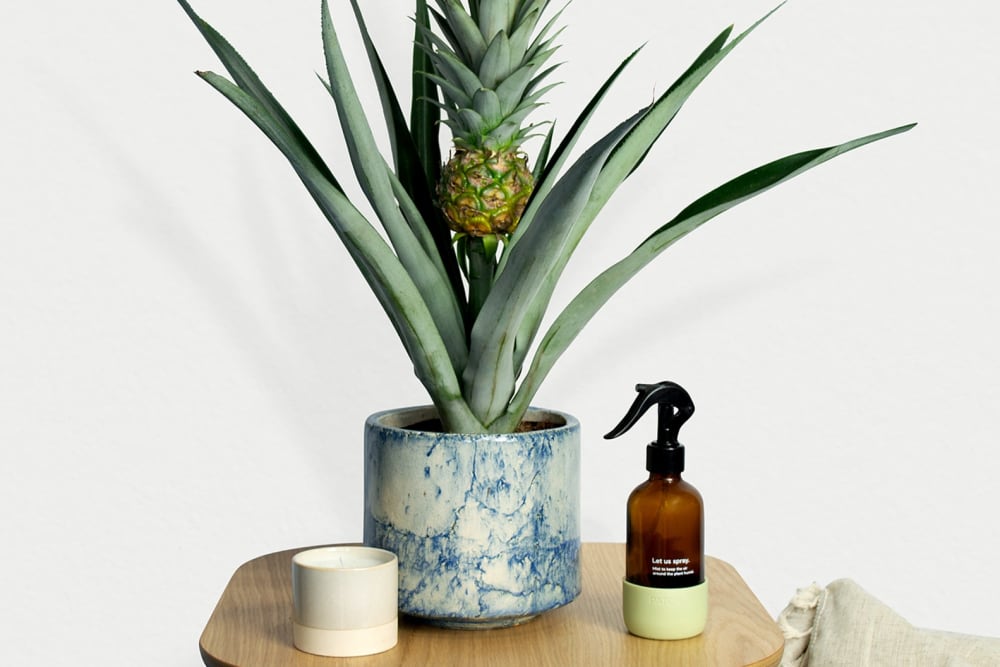
How much light does my pineapple plan need?
Pineapple plants need at least 6 hours of bright, indirect sunlight each day. If the plant is not getting enough light, its leaves will become pale and the plant will not produce fruit.
How often should I water my pineapple plant?
Pineapple plants should be watered regularly, but not too often. The soil should be allowed to dry out between waterings. If the soil is too wet, the plant can suffer from root rot.
What's the best soil for my pineapple plant?
Pineapple plants prefer well-draining, slightly acidic soil. A good potting mix for pineapple plants should contain a mix of peat moss, compost, and perlite or vermiculite.
Should I fertilise my pineapple plant?
Pineapple plants should be fertilised weekly in spring and summer with a balanced fertiliser that contains nitrogen, phosphorus, and potassium. This will help them to grow flowers and fruit, and keep their spiky leaves healthy.
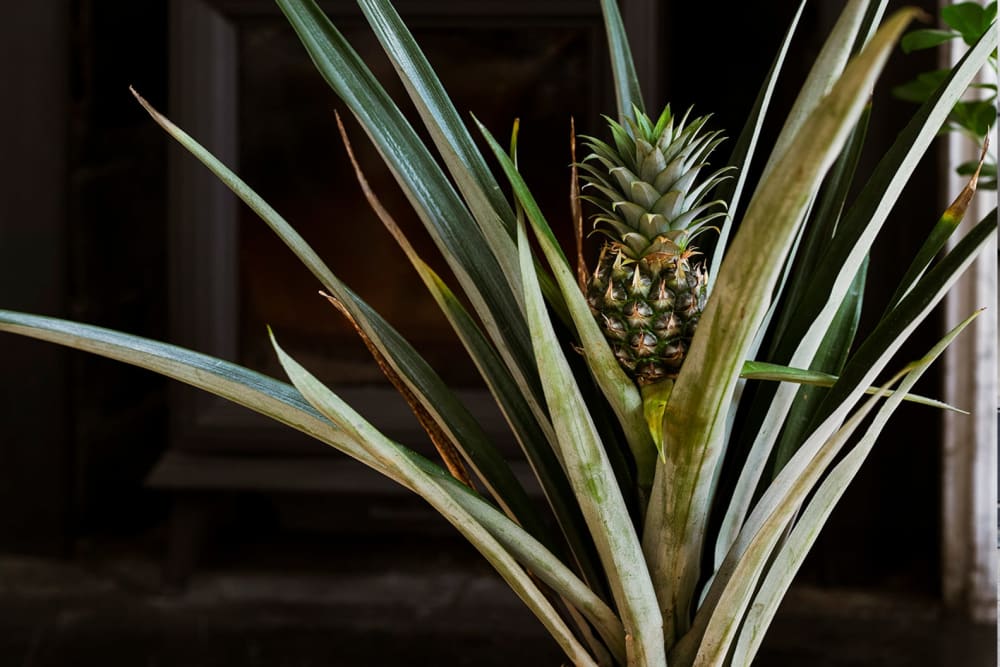
Do I need to prune my pineapple plant?
Pruning off dead or damaged leaves can help keep the plant healthy and promote new growth. Pineapple plants bloom only once. The plant then produces offsets (pups) and dies. Once the mother plant has bloomed and sent out offshoot pups, wait for the pups to develop small root systems of their own. Then, sever the pups carefully and repot them individually, making sure they've begun to form their own central cup. This shows they are ready to grow independently. Their root systems will grow about as wide as the foliage, so make sure the pot is large enough. Keep the young pups well-watered and they'll become a new plant in no time.
Can I propagate my pineapple plant?
Propagating pineapple plants is also easy; simply cut off a healthy leaf and place it in a pot of soil. You can learn more about propagation here.
Common pests and diseases
Pineapple plants are susceptible to a variety of pests and diseases. These include mealybugs, aphids, and fungal diseases. If you notice any of these issues, treat the plant with an appropriate pesticide or fungicide.
Can I eat the fruit my pineapple plant grows?
As spectacular as they look, you wouldn’t want to eat these pineapples, as the fruit can sometimes be toxic and very sour. Some things are best left to be looked at.
Following these steps will help ensure that your pineapple plant stays healthy and produces fruit. With the right care, your pineapple plant can provide you with many years of enjoyment.
Rewild your inbox
Plant tips. Special offers. No spam.
You might like
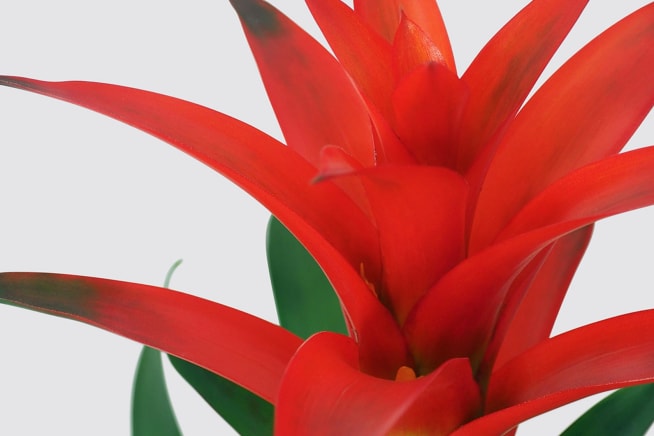
Complete guide to scarlet star care
A beacon of colour in your home
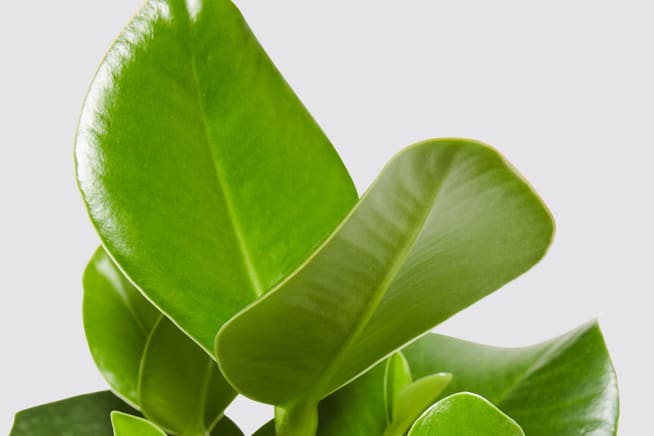
Complete guide to clusia princess care
This plant doesn't need royal treatment

Fabulous flowering indoor plants
Add colour to your urban jungle